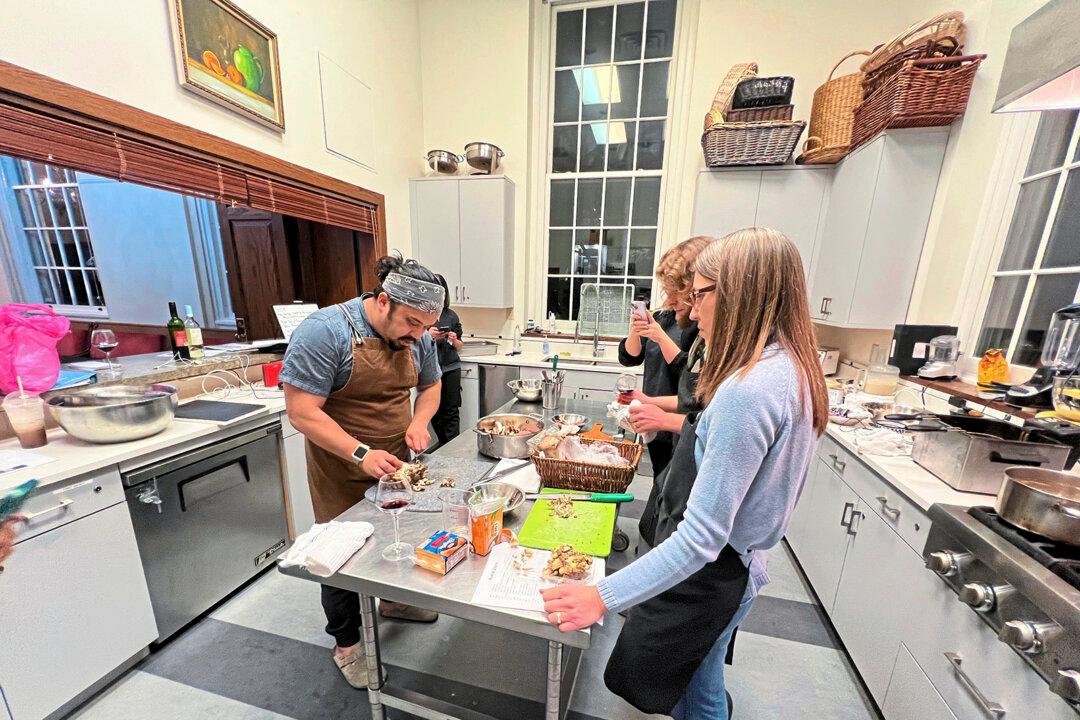Pittsburgh—Andrew Alvarez’s immigrant parents had high standards. From an early age, he knew they hoped a career in medicine or engineering would follow his 2004 graduation from Quaker Valley High School.
There was only one problem, and it was a biggie: Cooking is what actually fired the Sewickley, Pennsylvania native’s creative juices.
“It just appealed to my general nature, and just made sense,” he said.
What really ignited the flame was a year-long visit during fifth grade with his maternal grandparents in the Philippines, where his Chinese mother grew up. His extended family’s traditional foods became a “comfort thing” for the 10-year-old, and the various Asian cuisines and different ways of eating “really opened my eyes” to a world beyond the fast-food hamburgers, Italian-American pastas, Chinese buffets and Vocelli’s pizza he grew up on.
“My grandparents were ‘Chinoys’ (Chinese-heritage Filipinos), so I had this benefit of being exposed to both Filipino cuisines and Chinese cuisine,” he said.
Because meals are also a social affair in the Philippines, food was always connected to gatherings and great times. He remembered that as he studied culinary arts at IUP Punxsutawney.
Today, after years of cooking, planning menus and managing staff at upscale restaurants around the country, including the 4-star Peabody Hotel in Orlando, Florida, Orchids in Palm Court in Cincinnati and Or the Whale and Hotel Monaco in Pittsburgh, Alvarez is hoping to inspire others in the kitchen while opening their eyes to other cultures.
Date Nights
Last November, the 36-year-old Beechview resident became the first chef to help build a culinary program at Sweetwater Center for the Arts in Sewickley. He offers a range of cultural cooking classes for teens and adults several times a week in the Broad Street kitchen, including “date night” classes for couples, all with a single mission: to use food as a medium of communication and positive reinforcement for under-represented Black and Brown communities.
Last month, he led a class on the foods of West Africa and their influence on Southern cuisine, with recipes from Nigeria, Morocco, Senegal and Ghana. He also hosted a class on American influences on the cuisines of Guam and Korea following World War II and the Korean War. During the three-hour class, students got a brief history lesson while learning how to prepare Chamorro shrimp patties, Filipino leche flan and the Korean fusion stew budae-jiigae, which is made with an intriguing and fiery mix of Spam, hot dogs, kimchi, tofu, gochujang, ramen noodles and—wait for it—American cheese.
“If you saw [these ingredients] in a friend’s pantry, you‘d probably ask, ’Are you OK?‘ or ’Do you need money for groceries?,'” he told students as they went over the hot pot recipe also known as Army base stew. “You have every right to be suspicious.”
The punchy stew is the delicious result of Korean ingenuity and resourcefulness.
Food was scarce in Guam and Korea following the conflicts, Alvarez explained as the group went over the ingredient list. Surplus rations from U.S. military bases—procured by both legal and illegal means—helped people survive, often with surprising results. The blend of American ingredients with the traditional flavors of Korean cuisine produced a dish so tasty and hearty, it soon spread to restaurant menus. Today, budae-jiigae is one of Korea’s most beloved dishes.
Chamorro shrimp patties, which are made with the evaporated milk and frozen vegetables favored by U.S. sailors, have a similar origin. An offshoot of the American fritter, they were born in post-World War ll Guam.
“They were left with all this stuff and this was an ingenious way to create a fried shrimp dish,” noted Alvarez.






